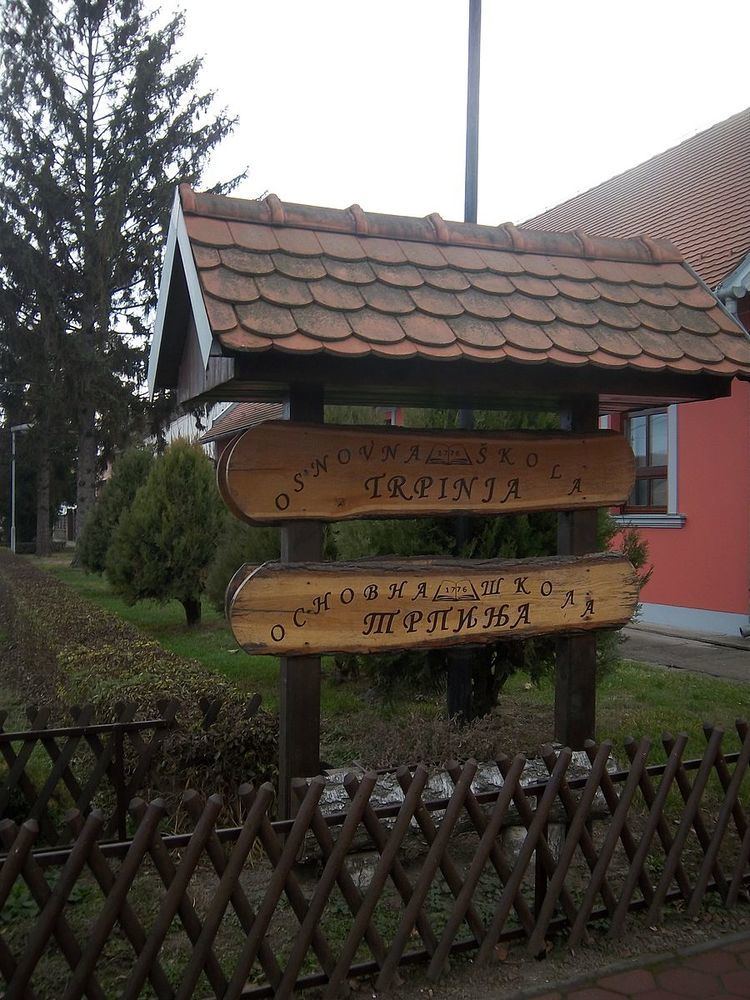 | ||
The Serbian language is one of the officially recognized minority languages in Croatia. It is primarily used by the Serbs of Croatia. The Croatian Constitution, Croatian Constitutional law on national minorities rights, Law on Education in language and script of national minorities and Law on Use of Languages and Scripts of National Minorities define the public co-official usage of Serbian in Croatia. Serbian and Croatian are two standardized varieties of the pluricentric Serbo-Croatian language.
Contents
History
The Orthodox liturgical book Varaždin Apostol from 1454 represents the oldest preserved text in Cyrillic from the territory of today's Croatia. Croatian Constitutional law on national minorities rights, one of only two constitutional laws in country, entered into force on 23 December 2002.
In April 2015 the United Nations Human Rights Committee urged the Croatian government to ensure the right of minorities to use their language and alphabet. The report noted the use of Serbian Cyrillic in Vukovar and municipalities concerned. Serbian Foreign Minister Ivica Dačić said that his country welcomes the UN Human Rights Committee's report.
Serbian language education
Most schools with instruction in Serbian are located in Vukovar-Srijem and Osijek-Baranja County in the area of former Eastern Slavonia, Baranja and Western Syrmia where rights on education in minority languages were provided during the United Nations Transitional Administration for Eastern Slavonia, Baranja and Western Sirmium based on the Erdut Agreement. Today with those schools there is also Kantakuzina Katarina Branković Serbian Orthodox Secondary School in Zagreb.
In the school year 2010-2011, 3.742 students attended kindergartens, primary and secondary schools in Serbian. 59 educational institutions offered Serbian language education that year and 561 educators and teachers worked in them. In school year 2011-2012 the total number of students was 4.059 in 63 educational institutions and 563 educators and teachers worked in them. Number of classes or groups in this period increased from 322 to 353.
Other forms of cultural autonomy
Various minority organizations use Serbian in their work. One of them, Association for Serbian language and literature in Croatia from Vukovar is a nonprofit professional organization that brings together scientists and technical workers in the Republic of Croatia engaged in studying and teaching of Serbian language and literature.
The co-official use at local government level
The Law on Use of Languages and Scripts of National Minorities provides for a mandatory co-official use of minority languages in municipalities of Croatia with at least one third of members of ethnic minoritiy. Municipalities Dvor, Gvozd, Jagodnjak, Šodolovci, Borovo, Trpinja, Markušica, Negoslavci, Biskupija, Ervenik, Kistanje, Gračac, Udbina, Vrbovsko, Donji Kukuruzari, Erdut and Vukovar, according to the provisions of law, are obliged to grant equal co-official use of Serbian language and Serbian Cyrillic alphabet. Law enforcement is facing great resistance in the part of the majority population, most notably in the case of Vukovar where it led to 2013 Anti-Cyrillic protests in Croatia.
